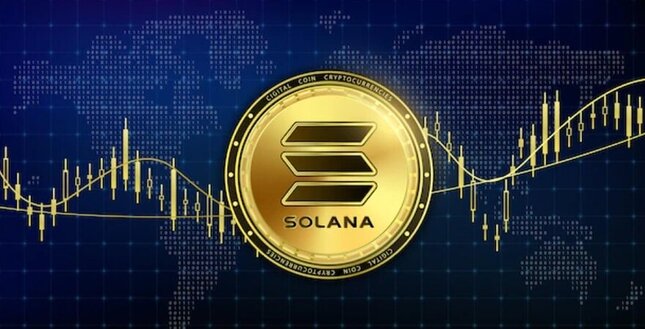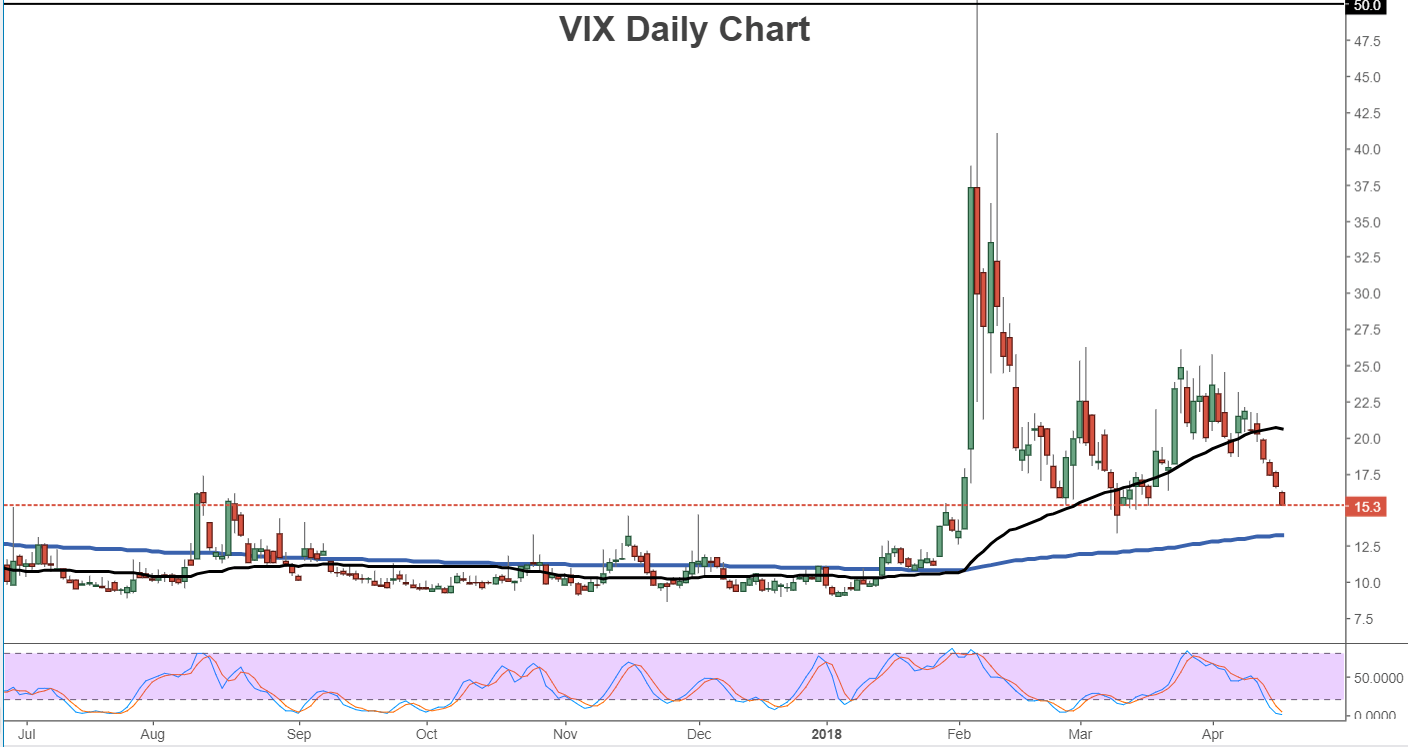As equity markets continued to rally sharply on Tuesday on the back of a strong start to corporate earnings season and decreased concerns over geopolitical risk, market fear as measured by the VIX volatility index continued to march lower. Since the sharp but short-lived stock correction in early February, during which the VIX recorded its largest one-day rise in its history at 116%, market volatility has declined sharply but has still remained in fluctuation around historically higher levels.
In the past 2-3 months, concerns over rising inflation and interest rates, increased political instability in the White House, President Trump’s protectionist trade policies, the specter of a trade war between the US and China, and rising geopolitical tensions over the Middle East, have all contributed at overlapping times to increased volatility in equity markets and an elevated VIX.
While none of the concern factors noted above have gone away – in fact, some can easily be re-triggered and exacerbated at any moment – markets have recently appeared to become more desensitized to the heightened perception of risk that has prevailed in the last few months. Even last week’s surprise attack on Syrian chemical weapons facilities by the US, UK, and France, which may still result in more intensified conflict between the US and Russia, led to only stronger markets and lowered volatility.
The last several trading days from mid-week last week have seen stock markets rise out of a choppy consolidation while the VIX fear gauge has continued to gap lower and decline to more normal levels, currently just above 15. It should be noted, however, that a similar volatility decline occurred in early March, but was quickly followed by yet another surge in the VIX as market fear returned. Therefore, the question remains as to whether the VIX’s current drop may just be a temporary lull or if it can be seen as a bonafide return to the business-as-usual market environment that prevailed throughout most of last year.
If previous volatility spikes are any indication, most notably the latest major one that began in August of 2015, a return to prior low levels of volatility can often take 2-3 months, but may sometimes take longer. The current VIX elevation is nearing two-and-a-half months old. While this is not to say that markets are fully back to “normal” or that 2017’s exceptionally low levels of volatility will return this year, the reliably mean-reverting tendency of volatility and the VIX suggests that calmer, less violently reactive markets may prevail, at least for the foreseeable future.
Investopedia does not provide individual or customized legal, tax, or investment services. Since each individual’s situation is unique, a qualified professional should be consulted before making financial decisions. Investopedia makes no guarantees as to the accuracy, thoroughness or quality of the information, which is provided on an “AS-IS” and “AS AVAILABLE” basis at User’s sole risk. The information and investment strategies provided by Investopedia are neither comprehensive nor appropriate for every individual. Some of the information is relevant only in Canada or the U.S., and may not be relevant to or compliant with the laws, regulations or other legal requirements of other countries. It is your responsibility to determine whether, how and to what extent your intended use of the information and services will be technically and legally possible in the areas of the world where you intend to use them. You are advised to verify any information before using it for any personal, financial or business purpose. In addition, the opinions and views expressed in any article on Investopedia are solely those of the author(s) of the article and do not reflect the opinions of Investopedia or its management. The website content and services may be modified at any time by us, without advance notice or reason, and Investopedia shall have no obligation to notify you of any corrections or changes to any website content. All content provided by Investopedia, including articles, charts, data, artwork, logos, graphics, photographs, animation, videos, website design and architecture, audio clips and environments (collectively the "Content"), is the property of Investopedia and is protected by national and international copyright laws. Apart from the licensed rights, website users may not reproduce, publish, translate, merge, sell, distribute, modify or create a derivative work of, the Content, or incorporate the Content in any database or other website, in whole or in part. Copyright © 2010 Investopedia US, a division of ValueClick, Inc. All Rights Reserved
Recommended Content
Editors’ Picks

EUR/USD extends slide below 1.0300, touches new two-year low
EUR/USD stays under bearish pressure and trades at its lowest level since November 2022, below 1.0300 on Thursday. The US Dollar benefits from the risk-averse market atmosphere and the upbeat Jobless Claims data, causing the pair to stretch lower.

GBP/USD slumps to multi-month lows below 1.2400 on broad USD strength
Following an earlier recovery attempt, GBP/USD reversed its direction and declined to its weakest level in nearly eight months below 1.2400. The renewed US Dollar (USD) strength on worsening risk mood weighs on the pair as trading conditions normalize after the New Year break.

Gold benefits from risk aversion, climbs above $2,650
Gold gathers recovery momentum and trades at a two-week-high above $2,650 in the American session on Thursday. The precious metal benefits from the sour market mood and the pullback seen in the US Treasury bond yields.

These 5 altcoins are rallying ahead of $16 billion FTX creditor payout
FTX begins creditor payouts on January 3, in agreement with BitGo and Kraken, per an official announcement. Bonk, Fantom, Jupiter, Raydium and Solana are rallying on Thursday, before FTX repayment begins.

Three Fundamentals: Year-end flows, Jobless Claims and ISM Manufacturing PMI stand out Premium
Money managers may adjust their portfolios ahead of the year-end. Weekly US Jobless Claims serve as the first meaningful release in 2025. The ISM Manufacturing PMI provides an initial indication ahead of Nonfarm Payrolls.

Best Forex Brokers with Low Spreads
VERIFIED Low spreads are crucial for reducing trading costs. Explore top Forex brokers offering competitive spreads and high leverage. Compare options for EUR/USD, GBP/USD, USD/JPY, and Gold.
